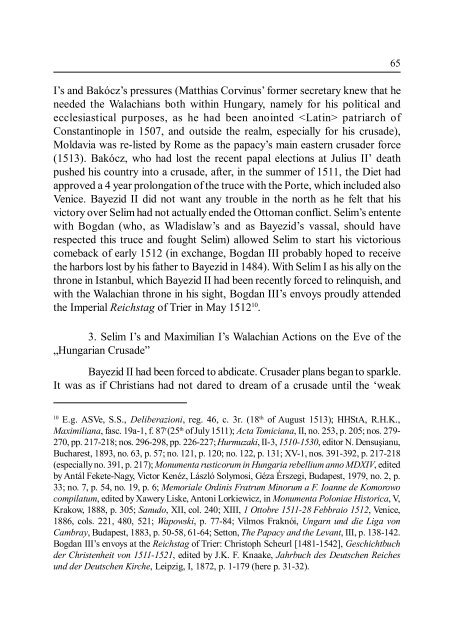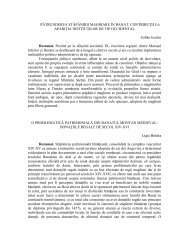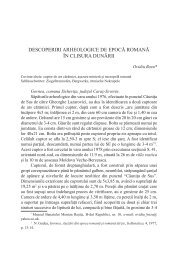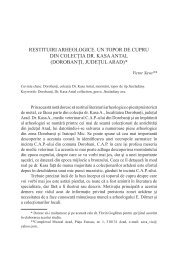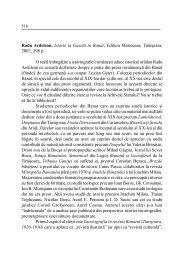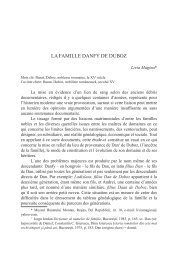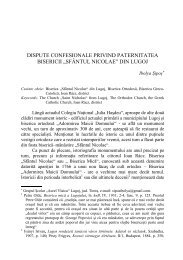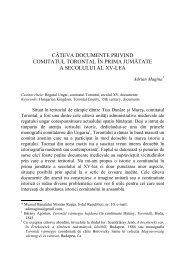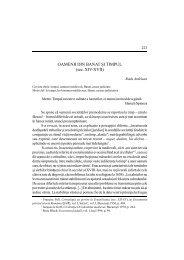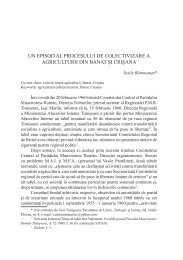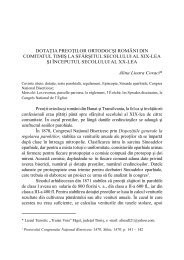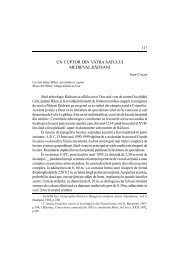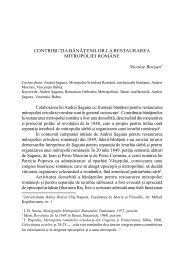Alexandru Simon - Banatica
Alexandru Simon - Banatica
Alexandru Simon - Banatica
You also want an ePaper? Increase the reach of your titles
YUMPU automatically turns print PDFs into web optimized ePapers that Google loves.
I’s and Bakócz’s pressures (Matthias Corvinus’ former secretary knew that he<br />
needed the Walachians both within Hungary, namely for his political and<br />
ecclesiastical purposes, as he had been anointed patriarch of<br />
Constantinople in 1507, and outside the realm, especially for his crusade),<br />
Moldavia was re-listed by Rome as the papacy’s main eastern crusader force<br />
(1513). Bakócz, who had lost the recent papal elections at Julius II’ death<br />
pushed his country into a crusade, after, in the summer of 1511, the Diet had<br />
approved a 4 year prolongation of the truce with the Porte, which included also<br />
Venice. Bayezid II did not want any trouble in the north as he felt that his<br />
victory over Selim had not actually ended the Ottoman conflict. Selim’s entente<br />
with Bogdan (who, as Wladislaw’s and as Bayezid’s vassal, should have<br />
respected this truce and fought Selim) allowed Selim to start his victorious<br />
comeback of early 1512 (in exchange, Bogdan III probably hoped to receive<br />
the harbors lost by his father to Bayezid in 1484). With Selim I as his ally on the<br />
throne in Istanbul, which Bayezid II had been recently forced to relinquish, and<br />
with the Walachian throne in his sight, Bogdan III’s envoys proudly attended<br />
the Imperial Reichstag of Trier in May 1512 10 .<br />
3. Selim I’s and Maximilian I’s Walachian Actions on the Eve of the<br />
„Hungarian Crusade”<br />
Bayezid II had been forced to abdicate. Crusader plans began to sparkle.<br />
It was as if Christians had not dared to dream of a crusade until the ‘weak<br />
10 E.g. ASVe, S.S., Deliberazioni, reg. 46, c. 3r. (18 th of August 1513); HHStA, R.H.K.,<br />
Maximiliana, fasc. 19a-1, f. 87 r (25 th of July 1511); Acta Tomiciana, II, no. 253, p. 205; nos. 279-<br />
270, pp. 217-218; nos. 296-298, pp. 226-227; Hurmuzaki, II-3, 1510-1530, editor N. Densuşianu,<br />
Bucharest, 1893, no. 63, p. 57; no. 121, p. 120; no. 122, p. 131; XV-1, nos. 391-392, p. 217-218<br />
(especially no. 391, p. 217); Monumenta rusticorum in Hungaria rebellium anno MDXIV, edited<br />
by Antál Fekete-Nagy, Victor Kenéz, László Solymosi, Géza Érszegi, Budapest, 1979, no. 2, p.<br />
33; no. 7, p. 54, no. 19, p. 6; Memoriale Ordinis Fratrum Minorum a F. Ioanne de Komorowo<br />
compilatum, edited by Xawery Liske, Antoni Lorkiewicz, in Monumenta Poloniae Historica, V,<br />
Krakow, 1888, p. 305; Sanudo, XII, col. 240; XIII, 1 Ottobre 1511-28 Febbraio 1512, Venice,<br />
1886, cols. 221, 480, 521; Wapowski, p. 77-84; Vilmos Fraknói, Ungarn und die Liga von<br />
Cambray, Budapest, 1883, p. 50-58, 61-64; Setton, The Papacy and the Levant, III, p. 138-142.<br />
Bogdan III’s envoys at the Reichstag of Trier: Christoph Scheurl [1481-1542], Geschichtbuch<br />
der Christenheit von 1511-1521, edited by J.K. F. Knaake, Jahrbuch des Deutschen Reiches<br />
und der Deutschen Kirche, Leipzig, I, 1872, p. 1-179 (here p. 31-32).<br />
65


